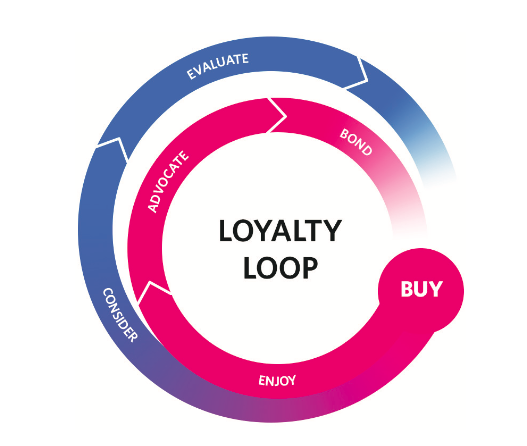With help from ecommerce experts, we look at the importance of customer lifetime value (LTV), a metric used by companies to measure the success of their customer retention strategies.
Customer lifetime value is a measure of the value of a customer to a business over the course of their relationship.
For example, a customer of Amazon buying a few items a month might be worth thousands in revenue over a period of years. Therefore, it’s in the interest of companies like Amazon to encourage customer loyalty.
It’s also why some companies (broadband providers for example) offer incentives at an initial loss to acquire customers – they know that it will pay off in the end if customers remain loyal.
I asked some of the expert contributors to our latest report on loyalty and retention for their views on LTV.
How Important is Customer Lifetime Value?
Zoe Ward, Optimisation Strategist at PRWD:
A company’s most loyal customers are also its most profitable. With each additional year of a relationship, customers become less costly to serve. Over time, as the loyalty life cycle plays out, loyal customers can even become business builders: buying more, paying premium prices, and bringing in new customers through referral.
Customer lifetime value can help to identify a brands top active customers.
James Gurd, Owner and Lead Consultant at Digital Juggler:
It depends on your audience and product. If you have a single purpose product where repeat purchases are few/infrequent, then much harder to make LTV a meaningful KPI.
However, for a brand with a consumable product set like fashion and beauty, LTV is hugely important because understanding it properly enables you to optimise your marketing investment and improve retention campaigns.
For example you can carry out order gap analysis to learn the typical repeat purchase cycle so you can do intervention campaigns if an existing customer hasn’t yet made their second purchase.
Linda Bustos, Director of Merchant Strategy at WebLinc:
Customer lifetime value is a sexy metric, but it’s relatively difficult to accurately calculate, and is a metric that is never ‘final.’ So long as the customer is alive and continues to purchase from you, his or her lifetime value should be increasing.
What you want to pay more attention to is shifts in consumption patterns. At what point does a profitable or ‘loyal’ customer (or customer cohort) begin to purchase with less frequency, with lower dollar values, or switch to competitors altogether.


Kristine Kirby, Managing Director, Digital at Pragma Consulting:
It is massively important. If you don’t know the value of a customer you can’t identify the ‘right’ customers with the desired behaviours a company wants when doing any acquisition, and without it, the data you have on existing customers is in a ‘one size fits all’ bucket.
With so much competition out there, rule one is Know Your Customer!
Lifetime value started in the days of catalogues and in the move to digital, too many companies, in my opinion, don’t look at tried and trusted methods like LTV, and that should be the foundation for any company looking to use data for any reason that the business needs.
Will Wynne, CEO and Co-Founder at Arena Flowers:
Lifetime value is very important, both in terms of the profitability of the business, and in terms of understanding whether we’re doing a good job.
If our flowers are beautiful & high quality & long-lasting, and the service is great, customers are open to buy again when they have the opportunity.
The two also go hand-in-hand: product & service quality increase lifetime value; lifetime value allows us to invest in product & service quality.
How Do You Measure Lifetime Value?
Companies will measure lifetime value in many different ways, depending on their typical purchase frequencies, type of product and business goals.
Broadly speaking, it’s the revenue you make from customers minus acquisition and any other costs incurred.
You can also focus on different customer segments and purchase patterns to find out more about your customers and how to improve your service for them.
James Gurd:
For me the best way to set targets is to focus first on repeat purchase rates and frequency. You can do this by audience, category or using cohorts. Just start somewhere and get a benchmark for what percentage of your audience places a second order within X months. That’s the baseline from which to improve.
Then look at order frequency by category and work out the average length of time between first and second purchase. You can then set-up triggered campaigns to fire X days/weeks before the likely repeat purchase to persuade people to return and give you another chance.
It’s not a perfect science, and you’ll need a smart analyst to get into the data and then someone to get on top of testing the triggered campaigns to learn what has the greatest impact.


Zoe Ward:
Customers who invest a lot of time and money in a brand are very important people indeed and are crucial to the overall success of a business. However, before VIP customer’s behaviour can be understood, they need to be identified.
One way to identify these top customers is by using the RFM model (regency, frequency, monetary value).
The theory behind RFM is straightforward:
- Customers who have purchased recently are more likely to buy again than customers who haven’t visited for a while.
- Customers who frequently spend are more likely to buy again than customers who buy infrequently.
- Customers who spend more are more likely to buy again than customers who spend less.
Once VIP customers have been identified, their experience needs to be tailored and ensure their shopping experience is as pleasurable as possible.
Will Wynne:
We focus on a couple of extra areas that anyone who’s delved into Lifetime Value significantly may recognise. For example:
- If a customer reaches and places a second order, they are much more likely to order again. Therefore ‘first to second order’ is something useful to look at.
- We measure net promoter score on every order (both at the time of transaction, and post-fulfillment) which helps. We go through the feedback that comes in from this in a good amount of detail, and both the scores & feedback are transparent between the various teams.
Speak to an expert
Learn how to convert your online audience into revenue with our experts.
Graham Charlton
Graham Charlton is Editor in Chief at SaleCycle. He's been covering ecommerce and digital marketing for more than a decade, having previously written reports and articles for Econsultancy. ClickZ, Search Engine Watch and more.








![Valentine’s Day Ecommerce Tips and Trends [2024 Strategy]](https://www.salecycle.com/wp-content/uploads/2019/01/valentines-ecommerce-1.png)




![How SaleCycle helped Vodafone increase their online sales by an additional 2,000 additional sales per month [Extended Version]](https://www.salecycle.com/wp-content/uploads/2023/08/vodafone-banner.webp)




